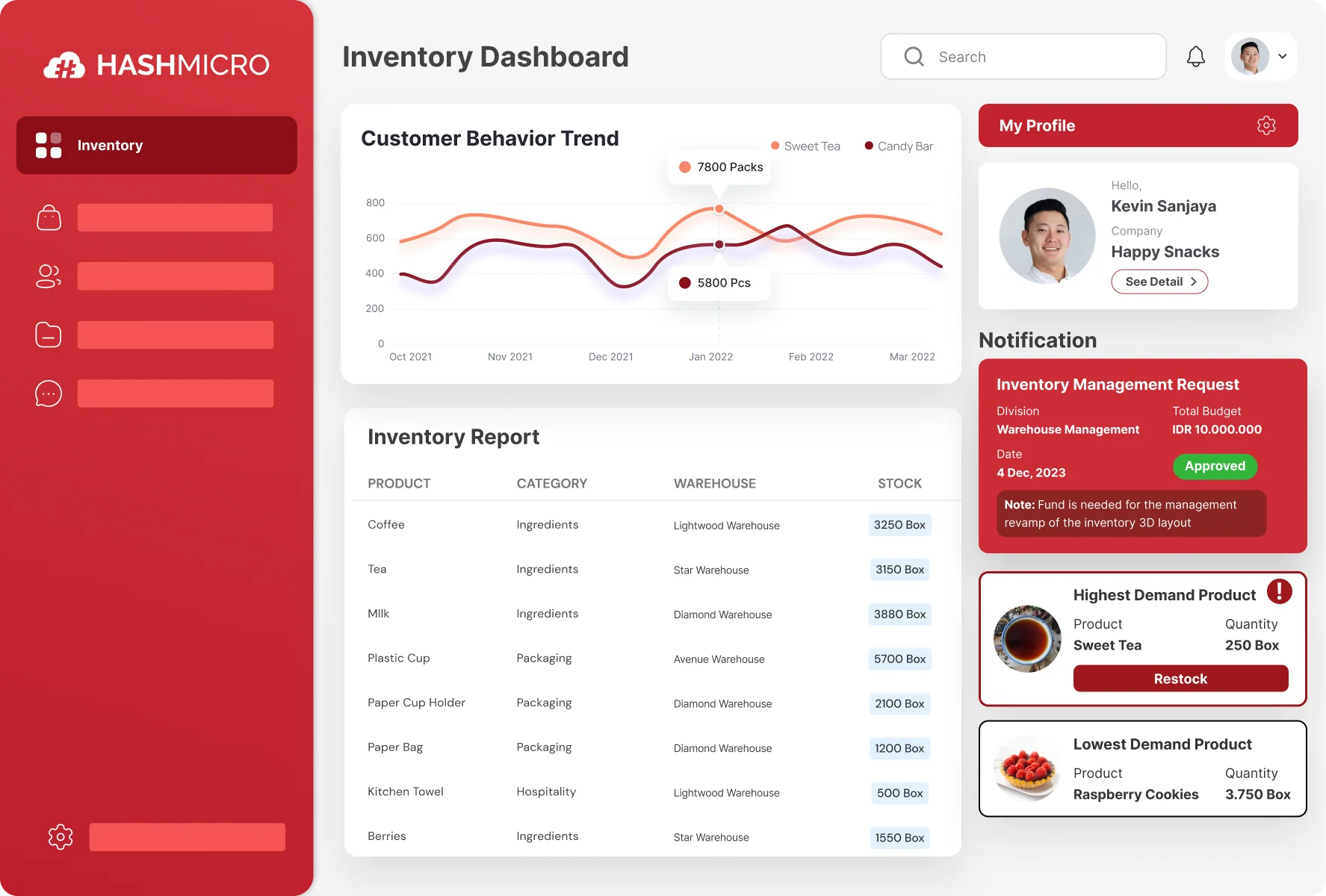Did you know industrial production in the Philippines dropped by 1.8% in October 2024? That’s after a 5% dip just the month before. These numbers might seem like just statistics, but for manufacturers, they reflect a deeper problem: work in process is vulnerable to economic shifts.
Imagine trying to meet deadlines and manage rising costs while dealing with inefficiencies you can’t even see. Nakakainis, di ba? Relying on manual systems or disconnected tools only makes things harder, which leaves production and finance teams scrambling.
Thus, understanding and managing work in process (WIP) effectively is crucial to overcoming these challenges. This article will discuss about work in process, its difference with work in progress (since many often confuse those two terms), examples, and the effective way to manage it.
Key Takeaways
|
Table of Contents
What is Work in Process?
Work in process (WIP) is partially completed goods that are produced from raw materials into finished products. While manufacturers commonly use this term, it can also apply to companies dealing in finished goods, such as when inventory is in transit or waiting for supplier orders to be fulfilled.
A typical example of WIP includes items completed within a single accounting cycle. WIP inventory is recorded on a manufacturer’s balance sheet and includes costs such as materials, labor, and manufacturing overhead.
For companies with large or complex production systems, WIP for a financial period can be estimated using formulas based on starting and ending inventory levels alongside production costs.
What is Work in Progress?
Work in progress (WIP) is assets that take a long time to complete. It is typically associated with large projects that require substantial time and resources. Some companies may use specific general ledger accounts for construction projects, but a major development can also be categorized as work in progress.
WIP is recorded on a company’s balance sheet, and its value increases as additional costs are incurred. Companies may also assess the asset’s fair market value (FMV) during annual financial reporting.
For example, consider a high-rise condominium in Metro Manila that is 70% complete. The company might include fair market value adjustments to reflect the potential financial benefits of the project beyond its costs.
Key Differences of Work in Process vs. Work in Progress

1. Scope of work
Work in process typically involves using standard equipment or machinery and bulk raw materials to create uniform products. While these products can still have significant value or size, they are usually associated with smaller, high-volume production runs.
For instance, a factory in Laguna producing large quantities of packaged snacks or canned goods would fall under this category.
In contrast, work in progress applies to large-scale, unique projects that require significant time to complete. These are one-time undertakings with extended timelines, often lasting years.
An example would be constructing a major bridge, like the Cebu-Cordova Link Expressway, which involves diverse materials and a lengthy process to finish a single project.
2. Industries
Because it involves repetitive processes and standardized workflows, work in process is more commonly associated with manufacturing. However, it can apply to any industry dealing with partially finished goods.
On the other hand, work in progress is typically linked to construction or industries handling large-scale projects. These industries often use a billing system called progress billings, where payments are made based on the project’s percentage of completion.
3. Financial statements
Both accounts appear on a company’s balance sheet, but their nature and accounting treatment differ slightly.
Work in process typically refers to inventory items with faster turnover rates. Since these assets are often completed and sold within a short time frame, they are generally categorized as short-term assets, especially when closely linked to raw materials and inventory.
In contrast, work in progress is usually classified as a long-term asset. These projects often take years to complete, and the financial benefits they generate may not be fully realized within a year.
4. Accounting treatment
Some companies prefer to finish all work in process items to simplify their financial statements. While this isn’t mandatory, the idea is to report only completed goods. Once finished, these goods are moved to inventory and later recorded as the cost of goods sold when purchased by a customer.
Work in progress, on the other hand, involves much larger projects and may need to be capitalized if it isn’t part of inventory. For instance, if a company builds a new headquarters, that project is classified as work in progress and is capitalized once completed.
Unlike work in process, which is typically not depreciated, work in progress often incurs depreciation over its useful life.
5. Asset liquidity
A company can liquidate work in process items more easily, even though they are incomplete. These goods typically require less time to finish and may attract buyers, especially if they are standardized products.
In contrast, work in progress items are much harder to sell. Projects like building a new warehouse or creating custom equipment are often tailored to the company’s needs and may not appeal to other buyers.
To sell these assets, the company might need to offer significant discounts, especially if the items are not standardized.
6. Typical time periods
Work in process typically aligns with short-term production cycles, as these items are often completed quickly within a defined timeframe. They are closely tied to ongoing manufacturing processes and are generally treated as part of inventory that moves swiftly through the system.
On the other hand, work in progress can have widely varying timelines, ranging from shorter projects to large-scale endeavors that take years to complete. These items are often tied to long-term investments, such as major construction projects, and require a broader timeframe to be fully realized.
7. Management focus
Work in process focuses on optimizing production workflows, reducing cycle times, and improving the management of inventory. It is closely related to manufacturing efficiency and ensuring that partially completed goods move quickly through the production line.
In contrast, work in progress is centered on achieving key project milestones, meeting deadlines, and maintaining steady progress toward completion. It is more about managing large-scale projects and ensuring they stay on track over extended timeframes.
Work in Process in Supply Chain and Accounting

As such, below is the further explanation how work in process, typically associated with manufacturing, plays out in scm and accounting sectors.
Work in Process in Supply Chain Management
Supply chain managers use WIP metrics to compare levels of raw materials, in-process goods, and finished products over time. This helps them ensure enough raw materials are available to meet production needs without tying up too many resources in unfinished goods or storage costs.
As a result, accurately tracking and valuing WIP as part of overall inventory is crucial. Furthermore, a study from researchgate on Philippine manufacturing companies highlights that supply chain integration improves delivery and fulfillment performance.
For instance, a company with high inventory levels compared to WIP may need to slow production until sales catch up, reducing storage and material costs. Conversely, if WIP goods are outpacing raw materials, the company might need to increase orders or accelerate procurement to prevent stockouts.
Work in Process in Accounting
In accounting, WIP refers to the total costs of unfinished goods at the end of an accounting period. These costs, which include materials, labor, and manufacturing overhead, are recorded in the WIP account and listed as a current asset on the balance sheet.
Once goods are finished, the costs move from the WIP account to the finished goods inventory account. When the products are sold, the costs are recorded as the cost of goods sold (COGS) on the income statement.
Work in Process Inventory Formula
The formula to calculate work in process (WIP) inventory is:
WIP Inventory = Beginning WIP Inventory + Manufacturing Costs – Cost of Finished Goods
Here’s what each component means:
- Beginning WIP Inventory: The starting value of WIP goods carried over from the previous period.
- Manufacturing Costs: These include raw materials, direct labor, and overhead expenses like utilities or equipment costs. Overhead can be allocated differently based on accounting methods, such as per unit or per hour.
- Cost of Finished Goods: The total manufacturing costs for goods completed, including beginning WIP and those started and finished during the period. COGM represents this value and is a key figure used in determining the overall cost of production.
Example:
Imagine Laguna Luxe Furniture Co., a fictional Filipino furniture manufacturer, starts the period with a beginning WIP inventory valued at ₱2,500,000.
During the period, it incurs ₱10,000,000 in manufacturing costs: ₱4,000,000 for materials, ₱5,000,000 for labor, and ₱1,000,000 in overhead. The company completes ₱9,000,000 worth of furniture and sends it to stores.
The WIP calculation would be:
WIP Inventory = ₱2,500,000 + ₱10,000,000 – ₱9,000,000 = ₱3,500,000
This ₱3,500,000 would be reported on the company’s balance sheet as a current asset under work in process inventory.
Work in Process Examples

Example 1: Perishable Goods
Marianna’s Pastries is a fictional commercial bakery that produces cakes, pastries, and other baked goods. Its production process includes multiple steps: mixing, baking, cooling, decorating, and packaging. Some specialty items, like custom wedding cakes, take several days to complete.
At the start of the month, Marianna’s Pastries had ₱1,250,000 worth of partially finished goods in its WIP inventory from the prior period.
During the month, the company spent ₱3,000,000 on ingredients, ₱3,750,000 on wages for bakers and decorators, and ₱2,250,000 on overhead costs like electricity and equipment maintenance.
By the end of the month, the bakery produced ₱7,750,000 worth of finished goods.
Using the WIP formula:
WIP Inventory = Beginning WIP (₱1,250,000) + Manufacturing Costs (₱3,000,000 + ₱3,750,000 + ₱2,250,000) – Cost of Finished Goods (₱7,750,000) = ₱2,500,000
Marianna’s Pastries noticed its WIP inventory increased. Since baked goods are perishable, the bakery adjusted its production schedule to prevent overstock and reduce potential waste. They decided to slow down production until customer demand catches up.
Example 2: Clothing Manufacturer
Davao Designer Threads is a fictional Philippine clothing manufacturer known for handcrafted garments. Its production process involves meticulous steps, with skilled artisans working on custom and high-quality clothing.
At the start of the financial period, the company had ₱1,600,000 worth of unfinished garments in its WIP inventory. During this time, it spent ₱4,750,000 on fabrics and supplies, ₱4,000,000 on labor, and ₱2,500,000 on manufacturing overhead.
By the end of the period, Davao Designer Threads produced ₱12,000,000 worth of finished clothing ready for sale.
Using the WIP formula:
WIP Inventory = Beginning WIP (₱1,600,000) + Manufacturing Costs (₱4,750,000 + ₱4,000,000 + ₱2,500,000) – Cost of Finished Goods (₱12,000,000) = ₱850,000
The company saw a significant decrease in WIP inventory, dropping from ₱1,600,000 to ₱850,000. However, if this trend continues and sales outpace production, stockouts could occur. To address this, Davao Designer Threads increased its production schedule to ensure a steady supply of finished goods while maintaining quality.
Effortless Work in Process Monitoring with HashMicro Inventory Software

HashMicro Inventory Software bridges the gaps between production, inventory, and finance teams, providing a unified platform for seamless updates on WIP. Unlike manual systems that often result in delays, this software enables every team to see real-time into the production process.
Furthermore, this system excels in flexibility to customize each feature as needed, along with being scalable and unlimited users. As your company grows, so does this system; no matter how many users there are, there’s no need to pay additional fees to enjoy the features.
Kaya naman, let’s see what features this system has to help with the WIP:
- Stock Forecasting with Automatic Reordering Recommendations: Uses historical consumption data and current production demand to calculate stock levels and predict when materials will run low. Automatically generates purchase orders or alerts for reordering.
- Products, Variants Management with Lot and Serial Number: Assigns unique identifiers to each product or variant to track them through every production stage.
- Stock Card Analysis for In-Depth Stock Movement Reports: Compiles detailed records of every stock transaction, such as incoming, outgoing, or transferred items. Tracks quantities, dates, and transaction types.
- Product Expiry Tracking, Notification, and Dashboard: Monitors expiration dates of materials and WIP inventory. Automatically sends alerts and highlights items nearing expiry on the dashboard.
- Integrated with Barcode, QR, and RFID: Utilizes barcode or RFID scanning to instantly update the system when materials are moved, used, or converted into finished goods.
Conclusion
Work in process (WIP) is managing partially completed goods as they move through production. Getting it right means smoother production process, better cost control, and fewer headaches when balancing inventory and finances.
Kung hirap ka nang i-track ang WIP, HashMicro Inventory Software can make things so much easier. With real-time updates and seamless team collaboration, you’ll always know what’s happening at every stage of production.
What’s even better? HashMicro grows with your business. Kahit lumaki pa ang team mo, wala kang kailangang bayaran na dagdag para sa more users. It’s flexible, customizable, and designed to make WIP management as easy as it should be.
Why not give the free demo a try and see the difference yourself?

FAQ on Work in Process
-
How is work in process accounted for in financial statements?
Work in process is recorded as an asset on a company’s balance sheet, representing the value of partially completed goods. It includes costs such as raw materials, direct labor, and manufacturing overhead. As production progresses and goods are completed, these costs are transferred from the WIP account to the finished goods inventory account.
-
What is the difference between work in process and finished goods inventory?
Work in process refers to items that are in the midst of production and not yet completed, while finished goods are products that have completed the production process and are ready for sale. The distinction is important for inventory management and financial accounting, as it affects how inventory is valued and reported.
-
How does work in process inventory affect a company’s cash flow?
WIP inventory ties up a company’s capital in the form of raw materials and labor costs that have not yet generated revenue. High levels of WIP can strain cash flow, as funds are invested in incomplete products.
-
Why is it important to manage work in process inventory effectively?
Effective management of WIP inventory is crucial because it impacts production efficiency, cash flow, and overall profitability. Excessive WIP can lead to increased holding costs and potential obsolescence, while insufficient WIP may cause production delays and unmet customer demand.
{
“@context”: “https://schema.org”,
“@type”: “FAQPage”,
“mainEntity”: [{
“@type”: “Question”,
“name”: “How is work in process accounted for in financial statements?”,
“acceptedAnswer”: {
“@type”: “Answer”,
“text”: “Work in process is recorded as an asset on a company’s balance sheet, representing the value of partially completed goods. It includes costs such as raw materials, direct labor, and manufacturing overhead. As production progresses and goods are completed, these costs are transferred from the WIP account to the finished goods inventory account.”
}
},{
“@type”: “Question”,
“name”: “What is the difference between work in process and finished goods inventory?”,
“acceptedAnswer”: {
“@type”: “Answer”,
“text”: “Work in process refers to items that are in the midst of production and not yet completed, while finished goods are products that have completed the production process and are ready for sale. The distinction is important for inventory management and financial accounting, as it affects how inventory is valued and reported.”
}
},{
“@type”: “Question”,
“name”: “Why is it important to manage work in process inventory effectively?”,
“acceptedAnswer”: {
“@type”: “Answer”,
“text”: “Effective management of WIP inventory is crucial because it impacts production efficiency, cash flow, and overall profitability. Excessive WIP can lead to increased holding costs and potential obsolescence, while insufficient WIP may cause production delays and unmet customer demand.”
}
},{
“@type”: “Question”,
“name”: “How does work in process inventory affect a company’s cash flow?”,
“acceptedAnswer”: {
“@type”: “Answer”,
“text”: “WIP inventory ties up a company’s capital in the form of raw materials and labor costs that have not yet generated revenue. High levels of WIP can strain cash flow, as funds are invested in incomplete products.”
}
}]
}











































